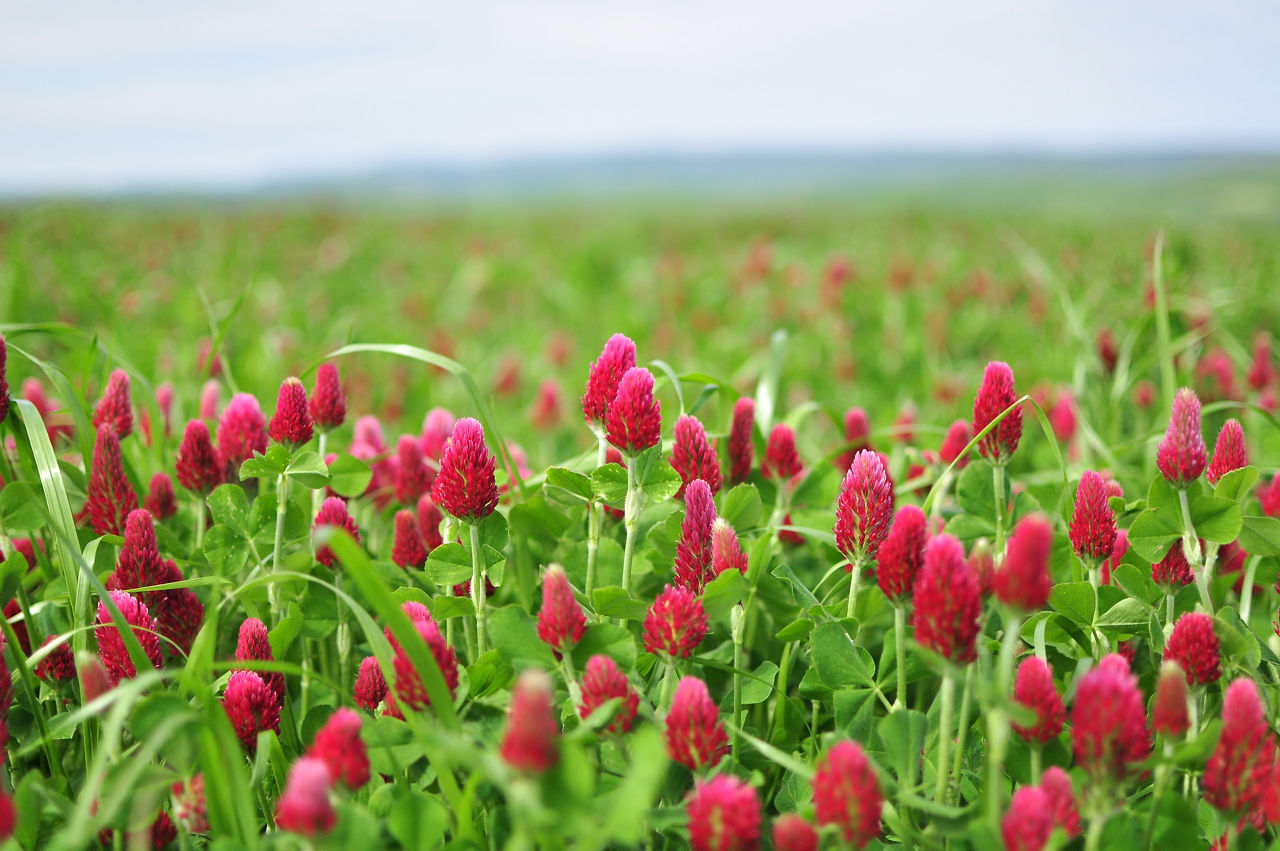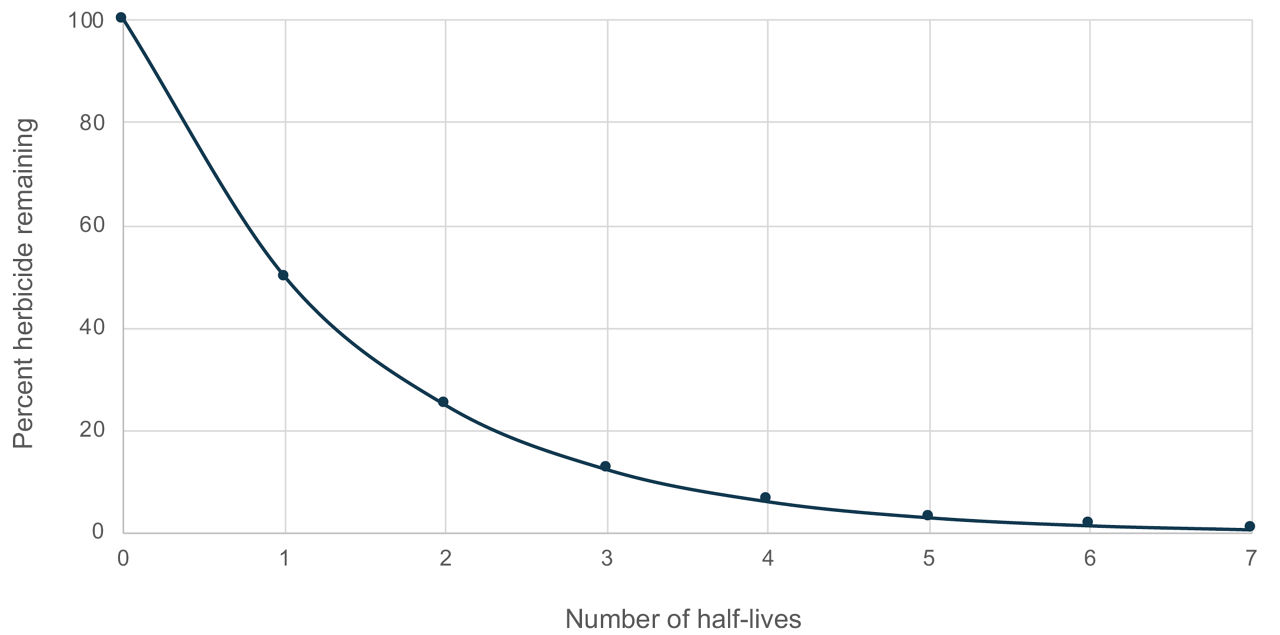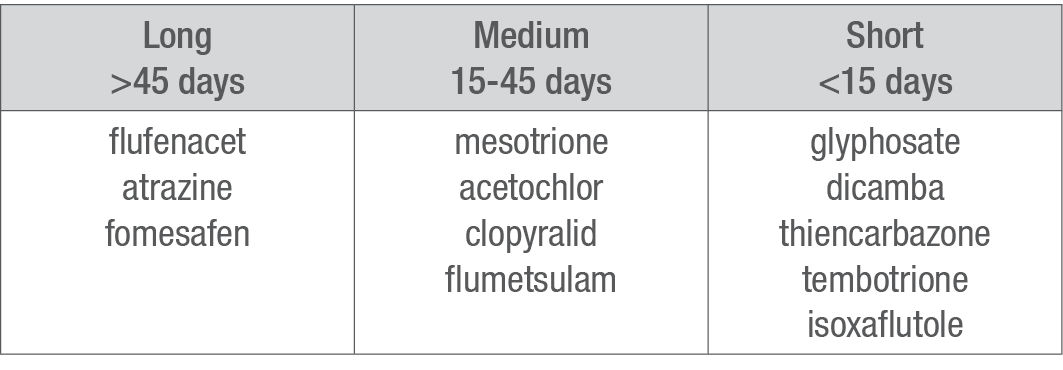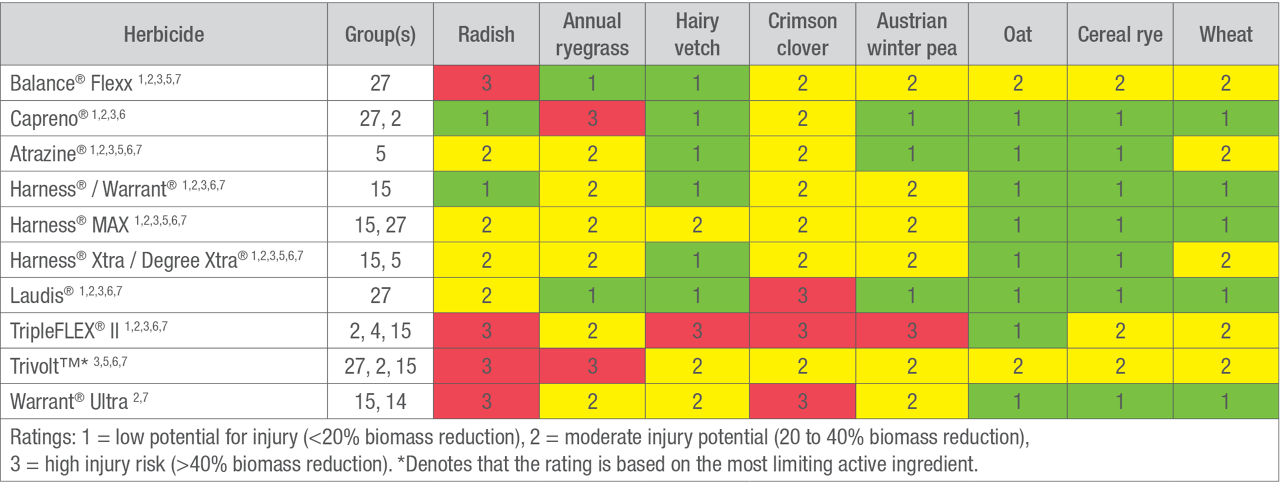Cover crops residual activity of Bayer corn and soybean herbicides
April 22, 2024
Cover crops can be an excellent tool for reducing erosion, building soil structure, improving soil water properties, and promoting soil microbe diversity and function. Additionally, cover crops can be utilized as a weed-control tactic, for cycling residual nitrogen, or for fixing atmospheric nitrogen.
The list of commonly used cover crops is diverse, containing multiple crop types (including grasses, legumes, and non-legume broadleaves), covering a wide range of seed sizes. This means that there are many potential interactions with common corn and soybean herbicides, specifically those with residual activity. Herbicide carryover can hinder the establishment of cover crops, reduce cover crop biomass, or kill a cover crop entirely. Understanding the effects of residual herbicides on cover crops helps to guide both the cover crop and herbicide selection process and avoid potential cover crop failures.

Understanding Residual herbicides
Two major factors affect herbicide residual activity on cover crops: the active ingredient’s activity against the cover crop species and the persistence of the herbicide in the soil. The greatest concern for injury to cover crops comes from herbicides that have high activity against a given species and long residual activity. Activity is specific to each active ingredient, and persistence is a function of the active ingredient’s half-life, the amount of time needed for a substance—in this case an ingredient in the herbicide—to break down until only one half of the initial amount remains. The process of herbicide degradation is one of exponential decay, meaning that the majority of the herbicide is lost within the first few half-lives (Figure 2). Additionally, half-life can be affected by soil and environmental conditions.

Half-life varies greatly between herbicide active ingredients, from a few days for glyphosate and dicamba to greater than 60 days for fomesafen, a component of Warrant® Ultra Herbicide (Table 1).

Factors affecting herbicide activity against cover crops
In addition to the properties of a herbicide, there are other factors that increase or decrease herbicide residual activity:
Soil factors: Factors that increase cation exchange capacity (CEC) such as higher clay content and organic matter typically increase residual activity. Soils with inherently low CECs, such as sands, are likely to have reduced residual activity. Soil pH also affects persistence, with pH values above 6.8 increasing the activity of some herbicides such as atrazine. Increased soil microbial activity generally results in increased herbicide degradation and reduced persistence.
Weather factors: Soil moisture is a primary driver of herbicide persistence, with increased rainfall reducing persistence. Conversely, drought conditions will increase herbicide persistence. Additionally, herbicides with greater solubility will leach below the rooting zones of seedlings more quickly, resulting in reduced injury potential. Increases in temperature accelerate microbial activity, resulting in quicker degradation of active ingredients.
Management factors: Tillage may reduce herbicide persistence as it mixes residues into the soil, but the incorporation of herbicides may reduce loss through volatilization and photodegradation. No-till practices result in residues being most concentrated at the soil surface, although it also exposes the herbicides to more environmental losses.

Managing cover crops and residual herbicides
Table 2 shows the injury potential of common Bayer herbicides and tank mix partners on select cover crop species. Ratings are based on information gathered from a variety of peer-reviewed and extension publications. This should only be used as series of guidelines, as actual injury risk will be a function of all the factors noted above. Table 2 reflects typical herbicide application and cover crop planting dates. Earlier application of herbicides will likely reduce injury potential while later applications will likely increase injury risk.
In general, small-seeded broadleaves such as brassicas and clovers possess the greatest injury risks, followed by small seeded-grasses such as annual ryegrass. Lager-seeded broadleaves such as vetches and peas generally have lower risks than smaller-seeded covers, while cereal grains have some of the lowest risks.
Cropping practices that result in earlier planting of cover crops such as silage crops may increase injury risk. Interseeding of cover crops poses additional risks of damage from residual herbicides, and particular attention should be given to late-season (August to September) interseeding of small-seeded cover crops, such as brassicas and clovers. Herbicide options for early season interseeding into corn at V4 to V6 are highly limited, often have tradeoffs with residual weed control, and are best suited to fields with lower weed pressure.
Ideally, one should develop herbicide and cover cropping strategies that are compatible with each other. What is selected first should depend on one’s needs and options. If there are specific weed or crop issues that limit herbicide options, it may be best to utilize the most effective herbicide and adapt a cover crop system to it. However, if a wide variety of herbicide options are present, weeds are easily manageable, and a specific cover crop species is desired to address a particular issue, it may be best to select cover crops first and develop an herbicide program that doesn’t affect the desired cover. Additionally, cover crops can be part of one’s weed control program, so as cover crops are incorporated one may find that they will control certain weeds, change the timing of weed emergence, or shift the species of common weeds in your system.
Cover crops can provide many agronomic and ecological functions. However, if a given cover crop species is preceded by a residual herbicide that is active and persistent, issues may develop. Matching herbicide programs with cover crops helps avoid potential problems and helps growers get the best potential return on their cover crop investment.
Sources
- Bradley, K. (n. d.). The effects of herbicide carryover on cover crops [PowerPoint slides]. Mizzou Weed Science, University of Missouri.https://extension.missouri.edu/media/wysiwyg/Extensiondata/Pro/WeedScience/Docs/CoverCropCarryover.pdf
- Cornelius, C. D., & Bradley, K. W. (2017). Carryover of common corn and soybean herbicides to various cover crop species. Weed Technology, 31, 21-31. https://doi.org/10.1614/WT-D-16-00062.1
- Duiker, S. W., White, C. M., & Wallace, J. W. (2021). Cover Crops. In J.Tooker & D. Lingenfelter (Eds.), 2021-2022 The agronomy guide (pp.151-154). The Pennsylvania State University.
- Essman, A., Loux, M., & Johnson, B. (2021). Cover crops for weed management: Herbicide persistence and carryover to cover crops [Fact Sheet]. United Soybean Board.https://iwilltakeaction.com/wp-content/legacy/uploads/files/20210623-factsheet-cover-crop-carryover-usdadraft.pdf
- Hartzler, B. (2023). Effect of residual herbicides on cover crop establishment. Iowa State University Extension and Outreach. https://crops.extension.iastate.edu/encyclopedia/effect-residual-herbicides-cover-crop-establishment
- Palhano, M. G., Norsworthy, J. K., & Barber, T. (2018). Sensitivity and likelihood of residual herbicide carryover to cover crops. Weed Technology, 32, 236-243.https://doi.org/10.1017/wet.2018.7
- Rector, L. S., Pittman, K. B., Beam, S. C, Bamber, K. W., Cahoon, C. W., Frame, W. H., & Flessner, M. L. (2020). Herbicide carryover to various fall-planted cover crop species. Weed Technology, 34, 25-34. https://doi.org/10.1017/wet.2019.79
7823_339851